
|
Now it is bright as 6.6 mag (Aug. 21, Marco Goiato). It is expected to brighten up to 5 mag from autumn to winter. It keeps observable in excellent condition until autumn in the Southern Hemisphere. In the Northern Hemisphere, it keeps unobservable until late November.
Date(TT) R.A. (2000) Decl. Delta r Elong. m1 Best Time(A, h)
Aug. 22 16 57.95 -70 15.1 1.113 1.698 106 7.1 20:11 ( 7,-16)
Aug. 29 15 49.82 -63 37.2 1.171 1.604 94 7.0 20:00 ( 17,-13)
|

|
It approached to the sun down to 0.3 a.u. on July 6, and brighted up to 3.9 mag (July 6, Thomas Lehmann). Now it is 9.5 mag (Aug. 20, Marco Goiato). In the Northern Hemisphere, it keeps observable until the comet fades out. It will not be observable after this in the Northern Hemisphere.
Date(TT) R.A. (2000) Decl. Delta r Elong. m1 Best Time(A, h)
Aug. 22 11 59.05 -28 38.3 1.560 1.187 49 9.8 20:11 ( 67,-18)
Aug. 29 12 24.42 -33 16.4 1.693 1.318 51 10.4 20:00 ( 62,-19)
|

|
It brightened up to 3.7 mag and became a naked eye comet in mid January (Jan. 13, Marek Biely). Now it is fading. But it is bright as 10.1 mag still now (Aug. 18, Juan Jose Gonzalez). In the Northern Hemisphere, it keeps observable for a long time until the comet fades out. It locates extremely low in the Southern Hemisphere, and it will be unobservable in late September.
Date(TT) R.A. (2000) Decl. Delta r Elong. m1 Best Time(A, h)
Aug. 22 15 33.07 48 12.3 3.116 3.039 76 10.5 20:11 (126, 58)
Aug. 29 15 40.32 45 16.5 3.220 3.113 74 10.7 20:00 (120, 57)
|
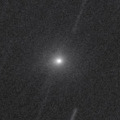
|
New bright comet. Now it is 11.6 mag (Aug. 18, Chris Wyatt). In the Southern Hemisphere, it keeps observable in the evening sky until the comet becomes fainter than 18 mag in winter. In the Northern Hemisphere, it will be unobservable soon, then it will never be observable again.
Date(TT) R.A. (2000) Decl. Delta r Elong. m1 Best Time(A, h)
Aug. 22 13 16.01 -10 56.2 0.929 0.874 53 11.3 20:11 ( 71, 6)
Aug. 29 13 41.41 -22 6.8 0.992 0.957 57 11.8 20:00 ( 61, 1)
|
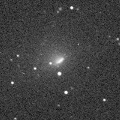
|
Now it is 11.7 mag (Aug. 7, Marco Goiato). It will brighten up to 11 mag autumn. In this apparition, it is observable until the highlight while the comet is brightening.
Date(TT) R.A. (2000) Decl. Delta r Elong. m1 Best Time(A, h)
Aug. 22 14 7.11 -9 5.8 1.856 1.687 64 11.4 20:11 ( 65, 17)
Aug. 29 14 22.73 -10 43.7 1.879 1.661 61 11.3 20:00 ( 64, 16)
|
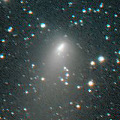
|
It brightened rapidly up to 10.4 mag from July to August (July 18, Maik Meyer). Now it is fading, but it is bright as 11.3 mag still now (Aug. 21, Uwe Pilz). It is observable in good condition in the Northern Hemisphere, but it will be getting lower gradually in the Southern Hemisphere.
Date(TT) R.A. (2000) Decl. Delta r Elong. m1 Best Time(A, h)
Aug. 22 18 59.24 39 57.1 0.969 1.651 112 11.3 20:57 (180, 85)
Aug. 29 18 52.15 41 46.1 1.034 1.662 108 11.5 20:22 (180, 83)
|
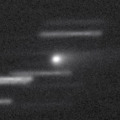
|
Now it is 12.2 mag (Aug. 19, Juan Jose Gonzalez). It will brighten up to 12 mag from August to October. In the Northern Hemisphere, it is getting higher gradually, and it keeps observable in good condition after this. In the Southern Hemisphere, it keeps low until November.
Date(TT) R.A. (2000) Decl. Delta r Elong. m1 Best Time(A, h)
Aug. 22 7 5.35 24 22.1 1.768 1.248 43 12.3 3:54 (256, 23)
Aug. 29 7 32.77 24 2.2 1.769 1.259 44 12.2 4:01 (257, 24)
|
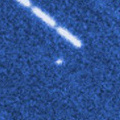
|
It brightened up to 12.8 mag until March (Mar. 21, Michael Mattiazzo). It must have brightened up to 10.5 mag in May and June, but it was not observable. In the Northern Hemisphere, it will be observable after autumn while the comet will be fading.
Date(TT) R.A. (2000) Decl. Delta r Elong. m1 Best Time(A, h)
Aug. 22 9 23.92 31 6.2 2.563 1.659 21 12.7 3:54 (232, 1)
Aug. 29 9 45.81 30 30.4 2.586 1.703 23 12.9 4:01 (234, 3)
|

|
It is fading, but bright as 11.4 mag still now (Aug. 21, Uwe Pilz). It keeps observable in good condition until winter when the comet becomes fainter than 18 mag.
Date(TT) R.A. (2000) Decl. Delta r Elong. m1 Best Time(A, h)
Aug. 22 2 52.89 12 23.0 1.459 1.965 103 12.8 3:54 (325, 64)
Aug. 29 2 55.70 12 37.2 1.429 2.011 109 13.1 4:01 (342, 67)
|
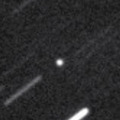
|
Now it is 16.2 mag (July 18, Taras Prystavski). It keeps observable after this while the comet will be getting brighter graudually. It will brighten up to 11 mag from autumn to winter. But it locates low at that time.
Date(TT) R.A. (2000) Decl. Delta r Elong. m1 Best Time(A, h)
Aug. 22 14 51.89 -8 19.1 1.611 1.662 74 13.4 20:11 ( 57, 26)
Aug. 29 15 4.97 -10 12.6 1.632 1.627 71 13.1 20:00 ( 56, 24)
|
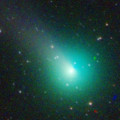
|
It brightened up to 6.0 mag in mid May (May 14, Chris Wyatt). Now it is fading. It has faded down to 9.0 mag in late June (June 21, Marco Goiato). It is appearing in the morning sky soon. In the Northern Hemisphere, it keeps observable in good condition after this while the comet will be fading. It locates somewhat low in the Southern Hemisphere.
Date(TT) R.A. (2000) Decl. Delta r Elong. m1 Best Time(A, h)
Aug. 22 8 35.90 16 26.7 2.665 1.762 21 13.1 3:54 (250, 1)
Aug. 29 8 38.29 17 12.3 2.692 1.858 27 13.3 4:01 (254, 8)
|

|
Now it is 12.9 mag (July 11, Gabor Santa). In 2015, it keeps 13-14 mag and will be observable in good condition for a long time.
Date(TT) R.A. (2000) Decl. Delta r Elong. m1 Best Time(A, h)
Aug. 22 19 9.10 -11 41.7 2.869 3.681 137 13.4 21:08 ( 0, 43)
Aug. 29 19 9.68 -12 10.2 2.958 3.703 131 13.5 20:41 ( 0, 43)
|
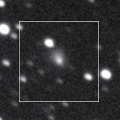
|
Now it is 14.1 mag (Aug. 5, Ken-ichi Kadota). It will pass close to the earth from spring to summer in 2016, and it is expected to be observable at 6-7 mag in good condition. In the Northern Hemispehre, it will be getting higher gradually in the morning sky, then it keeps observable in excellent condition until winter. In the Southern Hemisphere, it keeps very low until winter.
Date(TT) R.A. (2000) Decl. Delta r Elong. m1 Best Time(A, h)
Aug. 22 5 44.12 36 36.9 3.793 3.445 62 13.8 3:54 (250, 44)
Aug. 29 5 45.17 37 9.8 3.603 3.372 68 13.6 4:01 (252, 50)
|

|
It brightened in outburst twice in July. It is bright as 12.1 mag still now (Aug. 10, Chris Wyatt).
Date(TT) R.A. (2000) Decl. Delta r Elong. m1 Best Time(A, h)
Aug. 22 17 15.93 -30 1.1 5.565 6.015 111 13.6 20:11 ( 13, 24)
Aug. 29 17 16.52 -29 50.4 5.667 6.013 105 13.6 20:00 ( 17, 23)
|

|
It will pass the perihelion on Sept. 4. But it is not observable from the ground because it locates too close to the Sun.
Date(TT) R.A. (2000) Decl. Delta r Elong. m1 Best Time(A, h)
Aug. 22 11 48.22 -6 39.3 0.934 0.546 32 16.1 20:11 ( 88, -9)
Aug. 29 11 25.06 -0 59.5 0.895 0.315 17 13.6 20:00 ( 99,-14)
|
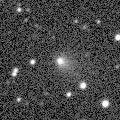
|
Now it is bright as 14.8 mag (July 26, Ken-ichi Kadota). It is expected to brighten up to 15 mag from autum to next spring, and to be observable in excellent condition in the Northern Hemisphere. It keeps unobservable in the Southern Hemisphere.
Date(TT) R.A. (2000) Decl. Delta r Elong. m1 Best Time(A, h)
Aug. 22 2 52.28 60 22.6 2.277 2.458 87 14.3 3:54 (196, 63)
Aug. 29 2 58.92 64 36.5 2.188 2.418 90 14.1 4:01 (187, 60)
|

|
Now it is 14.1 mag and visible visually (July 10, Jakub Cerny). Distant object, but it keeps observable at 14-15 mag for a long time from 2015 to 2016.
Date(TT) R.A. (2000) Decl. Delta r Elong. m1 Best Time(A, h)
Aug. 22 21 17.54 -2 44.8 4.296 5.282 165 14.4 23:15 ( 0, 52)
Aug. 29 21 15.34 -3 15.0 4.298 5.263 160 14.4 22:46 ( 0, 52)
|
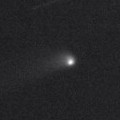
|
Now it is 16.5 mag (July 10, A. Maury, J.-G. Bosch, T. Noel). It will brighten up to 14 mag from 2015 to 2016. It keeps observable in good condition for a while.
Date(TT) R.A. (2000) Decl. Delta r Elong. m1 Best Time(A, h)
Aug. 22 3 1.86 11 43.9 3.854 4.182 101 14.6 3:54 (322, 62)
Aug. 29 2 56.21 12 16.8 3.728 4.181 109 14.6 4:01 (342, 66)
|

|
Now it is 15.0 mag (Aug. 5, Ken-ichi Kadota). It keeps 13 mag for a long time from 2015 autumn to 2016 summer. In the Northern Hemispehre, it keeps observable in good condition for a long time. It keeps unobservable in the Southern Hemisphere.
Date(TT) R.A. (2000) Decl. Delta r Elong. m1 Best Time(A, h)
Aug. 22 6 8.31 50 16.2 3.755 3.380 60 14.9 3:54 (231, 42)
Aug. 29 6 18.10 52 9.4 3.624 3.338 65 14.7 4:01 (229, 46)
|
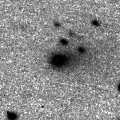
|
First return of a periodic comet discovered in 1994. Now it is 15.5 mag (July 26, Ken-ichi Kadota). It will brighten up to 15 mag from summer to autumn, and will be observable in excellent condition in the Southern Hemisphere. It locates somewhat low in the Northern Hemisphere.
Date(TT) R.A. (2000) Decl. Delta r Elong. m1 Best Time(A, h)
Aug. 22 22 57.55 -35 58.4 1.566 2.510 152 15.0 0:59 ( 0, 19)
Aug. 29 22 52.95 -35 56.3 1.554 2.497 153 14.9 0:27 ( 0, 19)
|

|
Now it is 14.9 mag (July 23, Taras Prystavski). It keeps 15 mag for a long time from 2014 to 2015. It is observable in excellent condition in the Northern Hemisphere. It locates low in the Southern Hemisphere.
Date(TT) R.A. (2000) Decl. Delta r Elong. m1 Best Time(A, h)
Aug. 22 2 21.92 36 14.4 3.795 4.128 102 15.1 3:54 (256, 84)
Aug. 29 2 19.44 37 48.2 3.722 4.149 108 15.0 3:53 (180, 87)
|

|
It was expected to brighten rapidly up to 15 mag in August. But actually, it is fainter than 18.5 mag, much fainter than predicted (Aug. 19, Paul Camilleri).
Date(TT) R.A. (2000) Decl. Delta r Elong. m1 Best Time(A, h)
Aug. 22 15 13.97 -10 13.7 0.223 1.000 80 15.2 20:11 ( 51, 29)
Aug. 29 16 17.46 -8 47.2 0.195 1.025 88 15.1 20:00 ( 41, 37)
|

|
It brightened very rapidly, and brightened up to 13.8 mag (May 11, Sandor Szabo). It is not observable now. It will appear in the morning sky in November, but it will be fainter than 17 mag.
Date(TT) R.A. (2000) Decl. Delta r Elong. m1 Best Time(A, h)
Aug. 22 11 3.21 -3 10.9 4.383 3.462 21 15.1 20:11 ( 97,-16)
Aug. 29 11 12.51 -4 15.1 4.418 3.470 17 15.3 20:00 ( 97,-18)
|

|
Now it is 12.5 mag (Aug. 19, Michael Jager). It was expected to brighten rapidly up to 11 mag from summer to autumn. But actually, it is fainter than predicted. In the Northern Hemisphere, it keeps observable in good condition in the morning sky. It keeps locating extremely low from summer to autumn.
Date(TT) R.A. (2000) Decl. Delta r Elong. m1 Best Time(A, h)
Aug. 22 6 58.70 28 55.5 0.940 0.763 45 15.4 3:54 (252, 27)
Aug. 29 7 33.73 25 25.0 1.021 0.764 44 15.4 4:01 (255, 25)
|
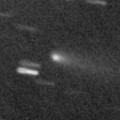
|
Now it is 14.6 mag and visible visually (July 12, Jakub Cerny). It will be observable in excellent condition at 14-15 mag in summer.
Date(TT) R.A. (2000) Decl. Delta r Elong. m1 Best Time(A, h)
Aug. 22 0 33.25 5 29.3 1.039 1.919 138 15.4 2:35 ( 0, 61)
Aug. 29 0 31.78 5 5.7 1.026 1.946 145 15.5 2:06 ( 0, 60)
|

|
It brightened up to 6.9 mag in 2014 autumn (Oct. 17, Marco Goiato). Now it is fading. It has already faded down to 15.1 mag (July 26, Taras Prystavski). In the Southern Hemisphere, it keeps observable in good condition until the comet fades out. In the Northern Hemisphere, it keeps observable until winter, but it locates somewhat low.
Date(TT) R.A. (2000) Decl. Delta r Elong. m1 Best Time(A, h)
Aug. 22 0 4.67 -26 8.7 3.843 4.731 147 15.5 2:07 ( 0, 29)
Aug. 29 23 55.41 -26 58.1 3.877 4.800 153 15.6 1:30 ( 0, 28)
|
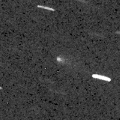
|
Now it is 16.4 mag (July 22, Taras Prystavski). It will be observable at 15 mag in good condition in autumn.
Date(TT) R.A. (2000) Decl. Delta r Elong. m1 Best Time(A, h)
Aug. 22 2 15.58 9 38.7 1.523 2.138 113 15.7 3:54 (347, 64)
Aug. 29 2 21.86 9 37.4 1.452 2.130 118 15.6 3:55 ( 0, 65)
|

|
Now it is 15.8 mag (Aug. 5, Ken-ichi Kadota). It keeps 15-16 mag for a long time until 2016. It keeps observable in excellent condition in the Northern Hemisphere. It keeps unobservable in the Southern Hemisphere.
Date(TT) R.A. (2000) Decl. Delta r Elong. m1 Best Time(A, h)
Aug. 22 5 16.26 53 26.9 5.467 5.197 69 15.8 3:54 (226, 50)
Aug. 29 5 21.47 54 47.0 5.373 5.194 74 15.8 4:01 (223, 54)
|

|
It brightened up to 13 mag in 2014. Now it is 15.7 mag (July 23, Taras Prystavski). It will be fading slowly after this. It is observable at 16 mag in excellent condition from summer to winter in 2015.
Date(TT) R.A. (2000) Decl. Delta r Elong. m1 Best Time(A, h)
Aug. 22 1 41.53 2 13.6 3.173 3.828 123 16.0 3:43 ( 0, 57)
Aug. 29 1 40.45 2 2.4 3.108 3.843 130 16.0 3:14 ( 0, 57)
|

|
Now it is 16.0 mag (May 26, Yasukazu Ikari). It is observable at 15-16 mag in good condition until autumn. It locates somewhat low in the Northern Hemisphere.
Date(TT) R.A. (2000) Decl. Delta r Elong. m1 Best Time(A, h)
Aug. 22 17 41.65 -25 17.5 7.657 8.172 117 16.1 20:11 ( 8, 29)
Aug. 29 17 39.24 -25 32.9 7.801 8.204 110 16.2 20:00 ( 13, 28)
|
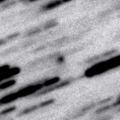
|
It brightened up to 16.4 mag in 2014 (Nov. 14, J. F. Hernandez). Now it is 17.5 mag (June 28, B. Lutkenhoner, M. Kumrucu-Lohmiller, P. Cox). It will be observable at 16 mag again from summer to autumn in 2015. However, it is fainter than this ephemeris recently.
Date(TT) R.A. (2000) Decl. Delta r Elong. m1 Best Time(A, h)
Aug. 22 3 56.96 26 25.4 2.254 2.402 85 16.2 3:54 (279, 62)
Aug. 29 4 4.82 26 54.9 2.193 2.426 90 16.2 4:01 (284, 68)
|

|
Now it is 18 mag (July 16, WISE). It is expected to brighten rapidly, and to be observable at 14.5 mag in good condition in autumn.
Date(TT) R.A. (2000) Decl. Delta r Elong. m1 Best Time(A, h)
Aug. 22 3 4.82 -4 41.1 1.179 1.741 104 16.8 3:54 (333, 47)
Aug. 29 3 19.90 -5 0.7 1.104 1.706 107 16.5 4:01 (340, 48)
|

|
Now it is 16.4 mag (June 12, Takaaki Oribe). It is fading, but it is observable at 17 mag in good condition until late autumn. The fragments B and C are already fainter than 20 mag (June 12, Takaaki Oribe).
Date(TT) R.A. (2000) Decl. Delta r Elong. m1 Best Time(A, h)
Aug. 22 23 20.34 6 55.2 5.344 6.261 152 16.8 1:22 ( 0, 62)
Aug. 29 23 15.32 5 57.8 5.346 6.307 160 16.8 0:50 ( 0, 61)
|
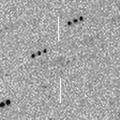
|
First return of a new periodic comet which brightened up to 12 mag in 2009. Now it is 18.3 mag (June 10, Hidetaka Sato), fainter than this ephemeris by 1 mag. It will be 17-18 mag at best in this apparition. It is observable in good condition in the Southern Hemisphere. In the Northern Hemisphere, it keeps locating extremely low after June.
Date(TT) R.A. (2000) Decl. Delta r Elong. m1 Best Time(A, h)
Aug. 22 13 42.60 -13 42.5 1.632 1.433 60 16.9 20:11 ( 65, 10)
Aug. 29 14 6.27 -14 28.5 1.665 1.439 59 17.0 20:00 ( 63, 11)
|
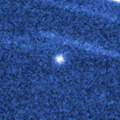
|
Now it is 16.5 mag (June 3, Taras Prystavski). In the Northern Hemisphere, it is getting higher gradually in the morning sky. In the Southern Hemisphere, it locates extremely low, and will be unobservable in August.
Date(TT) R.A. (2000) Decl. Delta r Elong. m1 Best Time(A, h)
Aug. 22 6 35.58 34 19.4 1.690 1.329 51 16.9 3:54 (249, 33)
Aug. 29 7 1.75 35 49.2 1.692 1.360 53 17.0 4:01 (248, 35)
|

|
It keeps 16 mag for a long time from 2015 autumn to 2016 summer. It keeps observable in excellent condition in the Southern Hemisphere. It locates low in the Northern Hemisphere.
Date(TT) R.A. (2000) Decl. Delta r Elong. m1 Best Time(A, h)
Aug. 22 3 18.37 -10 2.0 2.778 3.158 102 17.2 3:54 (332, 41)
Aug. 29 3 12.96 -12 44.5 2.621 3.118 110 17.0 4:01 (345, 41)
|

|
Now it is 17.5 mag (July 25, Katsumi Yoshimoto). It has brightened in outburst up to 14 mag twice, in 2006 January and 2011 May. It is around the perihelion now. It keeps observable at 17 mag for a long time after this.
Date(TT) R.A. (2000) Decl. Delta r Elong. m1 Best Time(A, h)
Aug. 22 23 23.15 -3 18.1 4.895 5.846 158 17.1 1:25 ( 0, 52)
Aug. 29 23 20.89 -3 35.8 4.866 5.850 165 17.0 0:55 ( 0, 52)
|
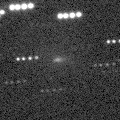
|
First return of a periodic comet discovered in 2008. Now it is 16.8 mag (June 21, J. Nicolas, C. Rinner, F. Kugel, A. Klotz). It approaches to the earth and it is observable at 16 mag in good condition from spring to summer.
Date(TT) R.A. (2000) Decl. Delta r Elong. m1 Best Time(A, h)
Aug. 22 3 33.77 -6 54.4 0.774 1.360 98 17.1 3:54 (325, 42)
Aug. 29 3 43.47 -7 39.5 0.783 1.402 102 17.2 4:01 (333, 44)
|

|
Now it is 16.5 mag (June 3, Taras Prystavski). It keeps observable in good condition until the comet fades out. In 2014, it must have been observable at 14 mag in good condition in the Southern Hemisphere.
Date(TT) R.A. (2000) Decl. Delta r Elong. m1 Best Time(A, h)
Aug. 22 0 45.05 1 58.8 3.271 4.072 137 17.2 2:47 ( 0, 57)
Aug. 29 0 41.34 2 9.7 3.257 4.123 144 17.2 2:15 ( 0, 57)
|
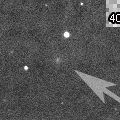
|
Fading rapidly. Now it is 16.0 mag (July 26, Ken-ichi Kadota). It will be fainter than 18 mag in late August.
Date(TT) R.A. (2000) Decl. Delta r Elong. m1 Best Time(A, h)
Aug. 22 5 9.10 4 4.4 2.339 2.257 72 17.2 3:54 (293, 35)
Aug. 29 5 17.16 3 34.4 2.309 2.307 77 17.7 4:01 (299, 40)
|

|
Now it is 18.3 mag (Aug. 18, Jean-Francois Soulier). It will be observable at 17 mag in good condition from summer to autumn.
Date(TT) R.A. (2000) Decl. Delta r Elong. m1 Best Time(A, h)
Aug. 22 23 45.72 -4 33.8 1.559 2.504 153 17.6 1:47 ( 0, 51)
Aug. 29 23 44.14 -5 5.7 1.521 2.496 160 17.4 1:18 ( 0, 50)
|
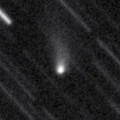
|
It brightened up to 15.3 mag in winter (Jan. 17, Taras Prystavski). Now it is fading. It has already faded down to 16.3 mag (July 22, Taras Prystavski). It keeps observable in good condition for a while. But it will be fainter than 18 mag in September.
Date(TT) R.A. (2000) Decl. Delta r Elong. m1 Best Time(A, h)
Aug. 22 22 18.55 -12 13.3 1.859 2.869 176 17.4 0:21 ( 0, 43)
Aug. 29 21 58.79 -11 26.0 1.920 2.925 172 17.5 23:28 ( 0, 44)
|

|
Now it is 16.2 mag (June 21, Space Surveillance Telescope, Atom Site). It keeps observable at 17 mag from spring to summer. It locates somewhat low in the Northern Hemisphere.
Date(TT) R.A. (2000) Decl. Delta r Elong. m1 Best Time(A, h)
Aug. 22 16 45.49 -22 37.9 2.868 3.270 104 17.4 20:11 ( 23, 29)
Aug. 29 16 49.84 -22 29.2 2.972 3.280 98 17.5 20:00 ( 26, 28)
|
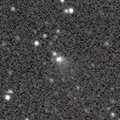
|
Now it is 15.6 mag (July 8, Taras Prystavski). It will be fading after this, and will be fainter than 18 mag in September.
Date(TT) R.A. (2000) Decl. Delta r Elong. m1 Best Time(A, h)
Aug. 22 17 11.71 -7 52.2 1.199 1.798 108 17.4 20:11 ( 21, 45)
Aug. 29 17 23.43 -8 19.7 1.266 1.812 104 17.6 20:00 ( 22, 44)
|

|
It will brighten up to 11 mag from spring to summer in 2016. In the Northern Hemisphere, it keeps observable in good condition while the comet will be brightening. It locates somewhat low in the Southern Hemisphere.
Date(TT) R.A. (2000) Decl. Delta r Elong. m1 Best Time(A, h)
Aug. 22 5 16.10 20 8.6 3.409 3.185 68 17.7 3:54 (275, 43)
Aug. 29 5 23.77 20 12.3 3.278 3.148 73 17.6 4:01 (279, 49)
|

|
Now it is 17.4 mag (June 14, A. Diepvens). It was observed at 17 mag in 2014 summer. In the Northern Hemisphere, it is observable at 17.5 mag in excellent condition also in 2015. It is not observable in the Southern Hemisphere.
Date(TT) R.A. (2000) Decl. Delta r Elong. m1 Best Time(A, h)
Aug. 22 22 2.59 54 4.6 4.042 4.547 113 17.6 0:04 (180, 71)
Aug. 29 21 58.71 53 21.0 4.035 4.578 116 17.6 23:29 (180, 72)
|
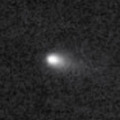
|
It brightened up to 15.9 mag in June as predicted (June 23, Ken-ichi Kadota). It was expected to be observable at 13 mag in good condition from summer to autumn. However, Jean-Gabriel Bosch detected the comet became disintegrating in July. Now it is so faint as 18.7 mag (July 13, Jean-Gabriel Bosch). The fragment D was also observed at 21.9 mag in May (May 30, Pan-STARRS 1).
Date(TT) R.A. (2000) Decl. Delta r Elong. m1 Best Time(A, h)
Aug. 22 2 3.93 2 27.7 0.971 1.702 118 17.7 3:54 (355, 57)
Aug. 29 2 11.90 2 49.1 0.933 1.707 122 17.7 3:45 ( 0, 58)
|

|
Now it is 18.8 mag (Aug. 10, A. Sodor, K. Sarneczky). It was predicted to be observable at 17.5 mag in good condition from autumn to winter, but it is a bit fainter actually.
Date(TT) R.A. (2000) Decl. Delta r Elong. m1 Best Time(A, h)
Aug. 22 18 12.23 24 3.6 1.281 1.921 113 17.9 20:11 ( 0, 79)
Aug. 29 18 14.24 21 5.9 1.274 1.883 110 17.8 20:00 ( 14, 76)
|
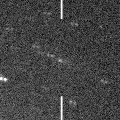
|
Now it is 17.2 mag (June 13, iTelescope Observatory, Siding Spring). It will be observable at 17.5 mag in good condition in summer.
Date(TT) R.A. (2000) Decl. Delta r Elong. m1 Best Time(A, h)
Aug. 22 3 8.52 9 36.3 1.177 1.691 100 17.8 3:54 (321, 59)
Aug. 29 3 17.93 9 19.2 1.147 1.718 105 17.8 4:01 (333, 62)
|

|
It has not been recovered yet. But it must be already bright as 18 mag. It will approach to the earth from autumn to winter, and it is expected to brighten up to 15 mag and observable in excellent condition.
Date(TT) R.A. (2000) Decl. Delta r Elong. m1 Best Time(A, h)
Aug. 22 3 36.03 -7 27.2 1.597 2.005 97 18.0 3:54 (325, 41)
Aug. 29 3 48.07 -7 20.0 1.504 1.965 100 17.8 4:01 (332, 44)
|

|
It must have brightened up to 11 mag from January to February, but no observations have been reported. Now it is 16.9 mag (July 9, A. Maury, J.-G. Bosch, T. Noel). It will be fainter than 18 mag in late August.
Date(TT) R.A. (2000) Decl. Delta r Elong. m1 Best Time(A, h)
Aug. 22 2 57.54 -12 33.5 1.982 2.490 108 17.9 3:54 (339, 40)
Aug. 29 2 57.89 -13 26.9 1.957 2.541 113 18.0 4:01 (350, 41)
|
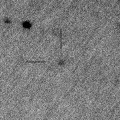
|
Now it is near the aphelion. It is observable at 17 mag in good condition from autumn to winter.
Date(TT) R.A. (2000) Decl. Delta r Elong. m1 Best Time(A, h)
Aug. 22 3 48.77 16 19.2 4.267 4.382 89 18.0 3:54 (298, 58)
Aug. 29 3 51.45 16 26.6 4.154 4.374 95 17.9 4:01 (309, 64)
|

|
Far object. Now it is 16.7 mag (July 17, J. Jahn). It keeps observable at 18 mag in good condition from summer to autumn.
Date(TT) R.A. (2000) Decl. Delta r Elong. m1 Best Time(A, h)
Aug. 22 19 45.91 -4 45.3 5.677 6.536 145 17.9 21:44 ( 0, 50)
Aug. 29 19 44.83 -5 13.8 5.737 6.537 139 17.9 21:16 ( 0, 50)
|
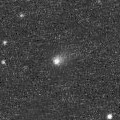
|
It brightened up to 15.3 mag in June (June 21, Space Surveillance Telescope, Atom Site). Now it is fading. It has already faded down to 17.1 mag (July 4, K. Hills). It will be fainter than 18 mag in August. It is observable in excellent condition in the Southern Hemisphere. It locates somewhat low in the Northern Hemisphere.
Date(TT) R.A. (2000) Decl. Delta r Elong. m1 Best Time(A, h)
Aug. 22 16 23.59 -24 5.1 2.333 2.694 99 17.9 20:11 ( 27, 26)
Aug. 29 16 30.49 -24 18.2 2.433 2.707 94 18.1 20:00 ( 29, 24)
|
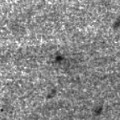
|
Now it is 18.9 mag (July 13, A. Maury, J.-G. Bosch, T. Noel, J.-F. Soulier). It was expected to brighten rapidly, and to be observable at 16 mag in good condition from summer to winter. But actually, it is much fainter than predicted.
Date(TT) R.A. (2000) Decl. Delta r Elong. m1 Best Time(A, h)
Aug. 22 23 25.42 -13 47.6 1.445 2.419 159 18.1 1:27 ( 0, 41)
Aug. 29 23 19.15 -13 28.8 1.390 2.385 166 18.0 0:54 ( 0, 42)
|
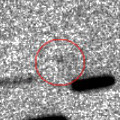
|
Now it is 17.0 mag (June 20, iTelescope Observatory, Siding Spring). First return of a comet re-discovered after 112-year blank in 2008. It brightened up to 12 mag in 2008. In this apparition, it was expected to brighten up to 15 mag from spring to summer, but it is fainter than predicted. It keeps locating low in the morning sky for a while.
Date(TT) R.A. (2000) Decl. Delta r Elong. m1 Best Time(A, h)
Aug. 22 4 13.14 12 7.2 1.631 1.841 84 18.0 3:54 (297, 51)
Aug. 29 4 23.69 11 22.4 1.599 1.879 89 18.1 4:01 (305, 55)
|
|
![]()
 C/2014 S2 ( PanSTARRS )
C/2014 S2 ( PanSTARRS ) C/2011 KP36 ( Spacewatch )
C/2011 KP36 ( Spacewatch ) C/2014 A4 ( SONEAR )
C/2014 A4 ( SONEAR ) C/2014 W2 ( PanSTARRS )
C/2014 W2 ( PanSTARRS ) 318P/2014 M6 ( McNaught-Hartley )
318P/2014 M6 ( McNaught-Hartley ) C/2014 N3 ( NEOWISE )
C/2014 N3 ( NEOWISE ) 320P/2015 HC10 ( McNaught )
320P/2015 HC10 ( McNaught ) C/2014 W11 ( PanSTARRS )
C/2014 W11 ( PanSTARRS ) 141P/Machholz 2
141P/Machholz 2 57P/du Toit-Neujmin-Delporte
57P/du Toit-Neujmin-Delporte C/2012 K1 ( PanSTARRS )
C/2012 K1 ( PanSTARRS ) 61P/Shajn-Schaldach
61P/Shajn-Schaldach C/2013 V4 ( Catalina )
C/2013 V4 ( Catalina ) 117P/Helin-Roman-Alu 1
117P/Helin-Roman-Alu 1 C/2010 S1 ( LINEAR )
C/2010 S1 ( LINEAR ) 44P/Reinmuth 2
44P/Reinmuth 2 230P/LINEAR
230P/LINEAR C/2011 J2 ( LINEAR )
C/2011 J2 ( LINEAR ) 325P/2015 J4 ( Yang-Gao )
325P/2015 J4 ( Yang-Gao ) 162P/Siding Spring
162P/Siding Spring C/2014 W5 ( Lemmon-PanSTARRS )
C/2014 W5 ( Lemmon-PanSTARRS ) 174P/(60558) 2000 EC98 ( Echeclus )
174P/(60558) 2000 EC98 ( Echeclus ) 319P/2015 G1 ( Catalina-McNaught )
319P/2015 G1 ( Catalina-McNaught ) C/2015 K1 ( MASTER )
C/2015 K1 ( MASTER ) 6P/d'Arrest
6P/d'Arrest 151P/Helin
151P/Helin C/2014 AA52 ( Catalina )
C/2014 AA52 ( Catalina ) 299P/2014 D2 ( Catalina-PanSTARRS )
299P/2014 D2 ( Catalina-PanSTARRS ) 221P/LINEAR
221P/LINEAR 81P/Wild 2
81P/Wild 2 C/2013 G3 ( PanSTARRS )
C/2013 G3 ( PanSTARRS ) 51P/Harrington
51P/Harrington 327P/2015 P2 ( Van Ness )
327P/2015 P2 ( Van Ness ) 220P/McNaught
220P/McNaught P/2003 WC7 ( LINEAR-Catalina )
P/2003 WC7 ( LINEAR-Catalina ) 7P/Pons-Winnecke
7P/Pons-Winnecke 74P/Smirnova-Chernykh
74P/Smirnova-Chernykh C/2012 LP26 ( Palomar )
C/2012 LP26 ( Palomar ) P/2015 F1 ( PanSTARRS )
P/2015 F1 ( PanSTARRS ) 50P/Arend
50P/Arend 205P/Giacobini
205P/Giacobini![]()

















































